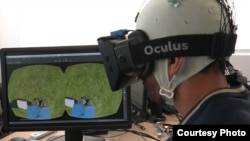Confounding
Gold Member
- Jan 31, 2016
- 7,073
- 1,551
- 280
- Banned
- #1
Cool.
Flexible spinal cord implants will let paralyzed people walk
Flexible spinal cord implants will let paralyzed people walk
Doctors dream of helping the paralzyed walk through implants that stimulate their spinal cords, but current technology makes that impossible; these stiff, unnatural gadgets usually end up damaging or inflaming nervous tissue over time. Swiss researchers may have just solved this problem once and for all, though. Their bendy e-Dura implant combines flexible electrodes (made of platinum and silicon microbeads), cracked gold electronic tracks and fluidic microchannels to deliver both electrical impulses and chemicals while mimicking the spine's movements and avoiding friction. Paralyzed rats in lab tests could both walk again after a few weeks and keep wearing their implants after two months.



